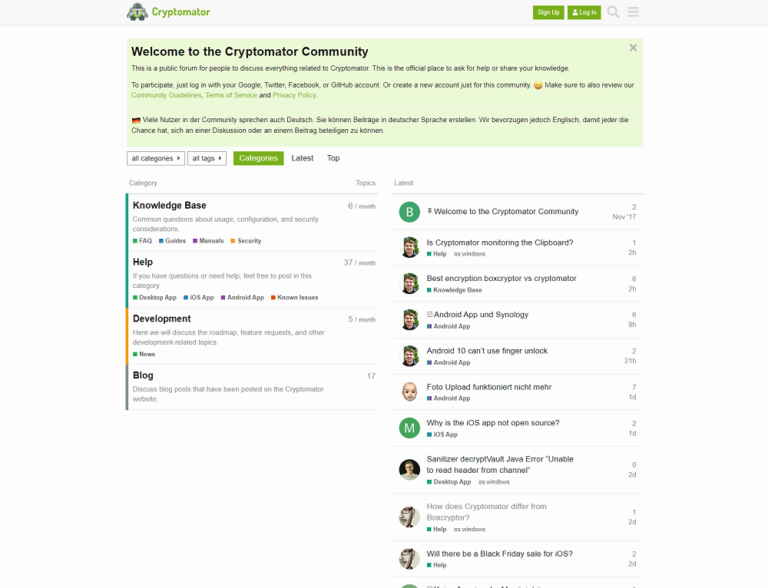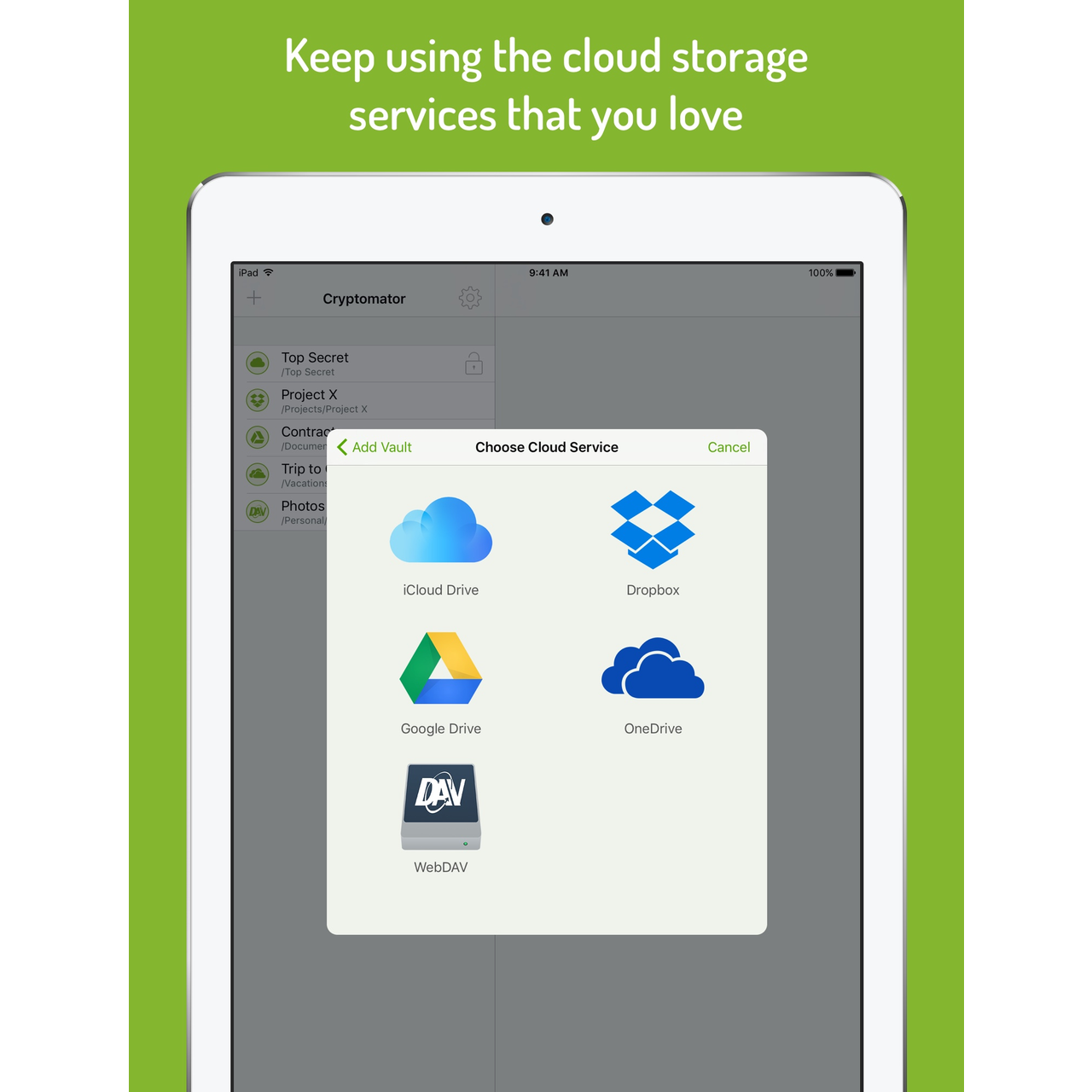
#Cryptomator user guide password#
After entering the correct password Cryptomator displays a diagram showing the currently en- and decrypted amount of data. If you select a locked vault, you can unlock it by entering your password. Unlocked vaults are marked with a green dot. Currently locked vaults are marked with a red dot in Cryptomator’s vault list. If you want to access the data inside a vault, you have to unlock it. You can now delete the folder that contains the masterkey.cryptomator file as you would do with other files and folders. The symbol ~ stands for your user directory. The storage location is displayed in Cryptomator below the vault name or when hovering the vault. To delete a vault permanently navigate to the storage location of the vault. By removing a vault, it is only removed from the list but not deleted from your filesystem. This is only possible while the vault is locked. If you want a specific vault to stop being displayed in Cryptomator, you can select it and remove it using the minus sign or by right-clicking on it. Navigate to the storage location of your vault and choose the file masterkey.cryptomator and click on Open.
#Cryptomator user guide plus#
To do this click on the plus sign and choose Open vault. You have to open vaults you created on another device, e.g your iPhone, to have them displayed in Cryptomator. Respectively your computer or the computer you connect your external drive to. You can use such vaults only where you can access the storage location. By doing this you can access your vault on all devices with access to your cloud and Cryptomator installed.Īs an alternative you can store your vault in any other location like your user directory or an external drive. inside your Dropbox or Google Drive folder. To make your vault available in the cloud you have to choose a storage location inside the cloud folder, e.g. We recommend to use at least 10 characters, ideally use sentences instead of words.Īfter you’ve created the vault ( 4), you can access your data. Choose a good password to make your data secure. You have to remember this password at all times because there is no way to access your data if you forget your password. Navigate to the desired location, enter the name for your vault and click Save.Īfter choosing the storage location you will be prompted for a password ( 3). To create a new vault click on the plus sign ( 1) and choose Create vault ( 2). When launching Cryptomator for the first time, you will see only an empty list and a hint stating that you can create new vaults. Manage VaultsĪfter starting Cryptomator the vault overview is displayed. You can recognize the storage location of a vault by the masterkey.cryptomator file inside. When navigating to the storage location of a vault without Cryptomator, you will only see a collection of directories and files with cryptic names and contents. You can freely choose the storage location of each vault.

The encrypted data is stored in a regular directory in the cloud, on your hard disk drive, or a USB flash drive. All files and folders you create inside the virtual drive will be encrypted and placed in the storage location of the vault on-the-fly. You can use this drive like using a regular USB flash drive or hard disk drive. If you use a vault with Cryptomator, it will be displayed as a virtual drive. You may also use a vault on multiple computers using an external drive. Is the vault stored in the cloud you can even do this using separate computers or your iPhone or iPad (TODO link). You can access your data using the Cryptomator application and the vault password. Data you put into the vault is encrypted and secure.
#Cryptomator user guide portable#
You can think of a vault as a real, portable vault.


With Cryptomator your data is managed in vaults.


 0 kommentar(er)
0 kommentar(er)
